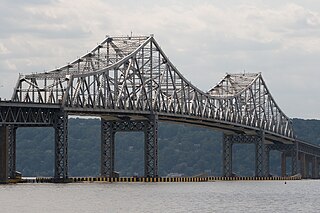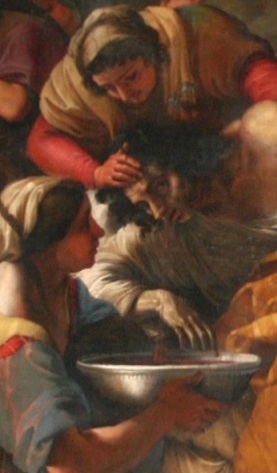Related Research Articles
Photophobia is a medical symptom of abnormal intolerance to visual perception of light. As a medical symptom, photophobia is not a morbid fear or phobia, but an experience of discomfort or pain to the eyes due to light exposure or by presence of actual physical sensitivity of the eyes, though the term is sometimes additionally applied to abnormal or irrational fear of light, such as heliophobia. The term photophobia comes from the Greek φῶς (phōs), meaning "light", and φόβος (phóbos), meaning "fear".
Aquaphobia is an irrational fear of water.

Panphobia, omniphobia, pantophobia, or panophobia is a vague and persistent dread of some unknown evil. Panphobia is not registered as a type of phobia in medical references.
Neophobia is the fear of anything new, but is directly correlated with conditions such as OCD or autism spectrum disorder. In its milder form, it can manifest as the unwillingness to try new things or break from routine. In the context of children, the term is generally used to indicate a tendency to reject unknown or novel foods. Food neophobia, as it may be referred to, is an important concern in pediatric psychology.
Phonophobia, also called ligyrophobia or sonophobia, is a fear of or aversion to loud sounds —a type of specific phobia. It is a very rare phobia which is often the symptom of hyperacusis. Sonophobia can refer to the hypersensitivity of a patient to sound and can be part of the diagnosis of a migraine. Occasionally it is called acousticophobia.

Fear of the dark is a common fear or phobia among children and, to a varying degree, adults. A fear of the dark does not always concern darkness itself; it can also be a fear of possible or imagined dangers concealed by darkness. When waking or sleeping, these fears may intertwine with sighting sleep paralysis demons. Some degree of fear of the dark is natural, especially as a phase of child development. Most observers report that fear of the dark rarely appears before the age of two years. When fear of the dark reaches a degree that is severe enough to be considered pathological, it is sometimes called scotophobia, or lygophobia.
Gerontophobia is the fear of age-related self-degeneration, or a hatred or fear of the elderly due to memento mori. The term comes from the Greek γέρων – gerōn, "old man" and φόβος – phobos, "fear". Gerontophobia has been linked to Thanatophobia as fear of old age can be a precursor to fear of death. Gerontophobia can be caused by harmful stereotypes of elderly people displayed in the media
Mysophobia, also known as verminophobia, germophobia, germaphobia, bacillophobia and bacteriophobia, is a pathological fear of contamination and germs. It is classified as a type of specific phobia, meaning it is evaluated and diagnosed based on the experience of high levels of fear and anxiety beyond what is reasonable when exposed to or in anticipation of exposure to stimuli related to the particular concept. William A. Hammond first coined the term in 1879 when describing a case of obsessive–compulsive disorder (OCD) exhibited in repeatedly washing one's hands.

Taphophobia is an abnormal (psychopathological) phobia of being buried alive as a result of being incorrectly pronounced dead.
Equinophobia or hippophobia is a psychological fear of horses. Equinophobia is derived from the Greek word φόβος (phóbos), meaning "fear" and the Latin word equus, meaning "horse". The term hippophobia is also derived from the Greek word phóbos with the prefix derived from the Greek word for horse, ἵππος (híppos). Sufferers of equinophobia may also fear other hoofed animals such as donkeys and mules.
Gynophobia or gynephobia is a morbid and irrational fear of women, a type of specific social phobia.
Gymnophobia is a fear (phobia) of or prejudice against nudity.

Gephyrophobia is the anxiety disorder or specific phobia characterized by the fear of bridges and tunnels, especially those that are older. As a result, sufferers of gephyrophobia may avoid routes that will take them over bridges, or if they are a passenger, will act very apprehensively when passing over a bridge. The term gephyrophobia comes from the Greek γέφυρα (gephura), meaning "bridge", and φόβος (phobos), meaning "fear".
Fear of fish or ichthyophobia ranges from cultural phenomena such as fear of eating fish, fear of touching raw fish, or fear of dead fish, up to irrational fear. Selachophobia, or galeophobia, is the specific fear of sharks.

Nausea is a diffuse sensation of unease and discomfort, sometimes perceived as an urge to vomit. While not painful, it can be a debilitating symptom if prolonged and has been described as placing discomfort on the chest, abdomen, or back of the throat.
According to the DSM-IV classification of mental disorders, the injury phobia is a specific phobia of blood/injection/injury type. It is an abnormal, pathological fear of having an injury.
Scopophobia, scoptophobia, or ophthalmophobia is an anxiety disorder characterized by a morbid fear of being seen in public or stared at by others.
Ombrophobe or ombrophobous/ombrophobic plant is a plant that cannot withstand much rain. The term was introduced by the 19th-century botanist Julius Wiesner, who identified the two extreme kinds of plants, ombrophobes and ombrophiles. Xerophytes are usually ombrophobous.
Nosocomephobia is defined as the excessive fear of hospitals.